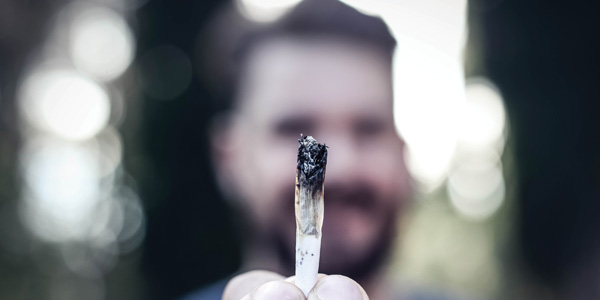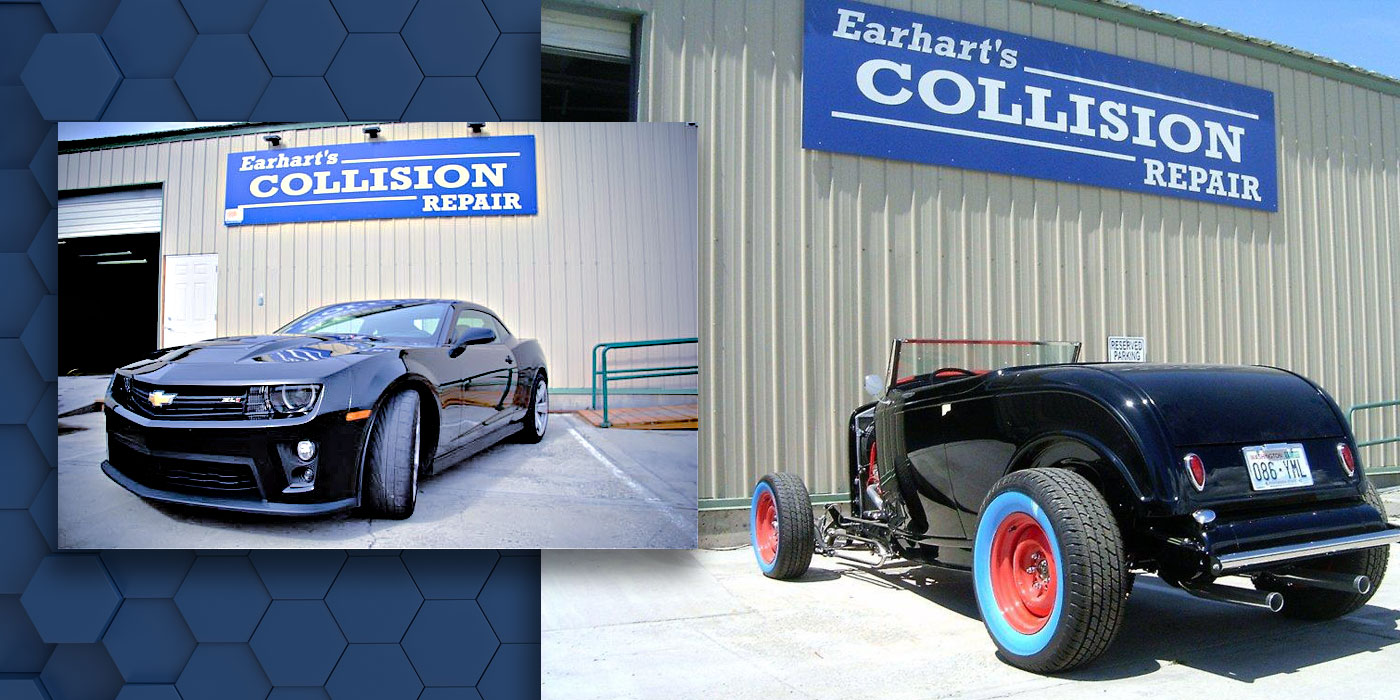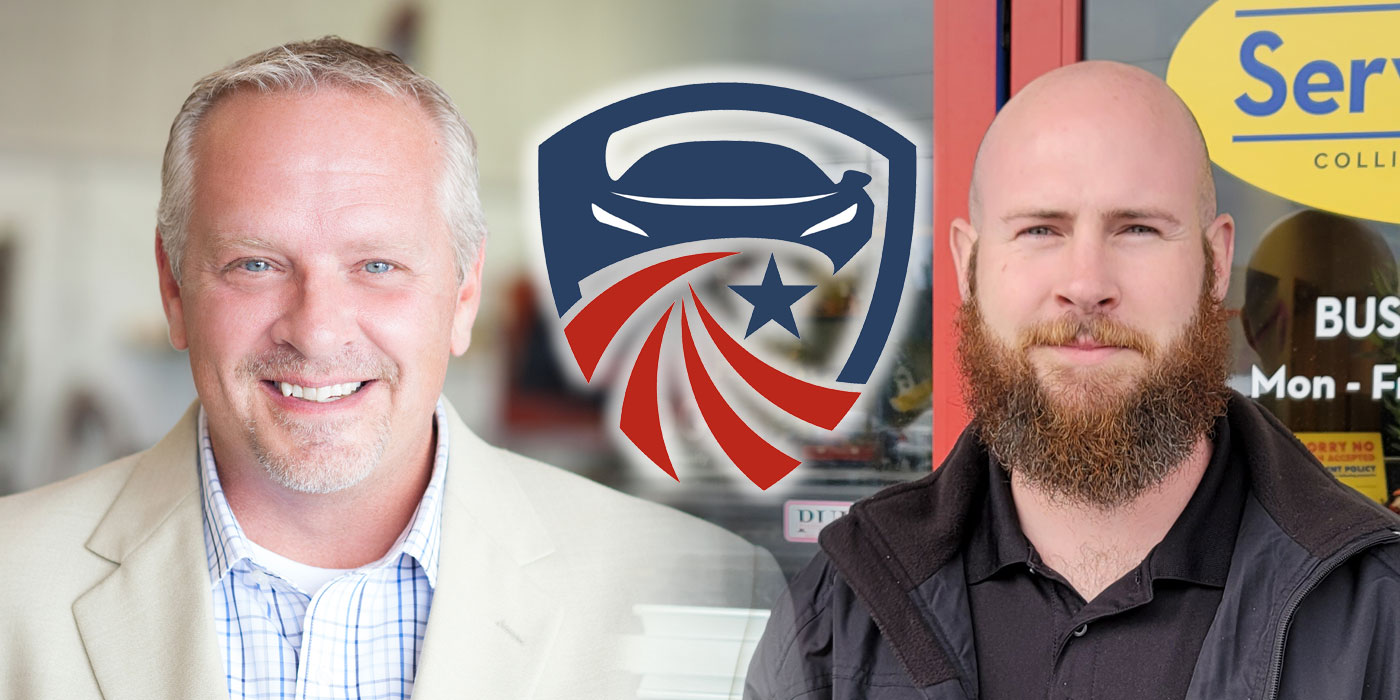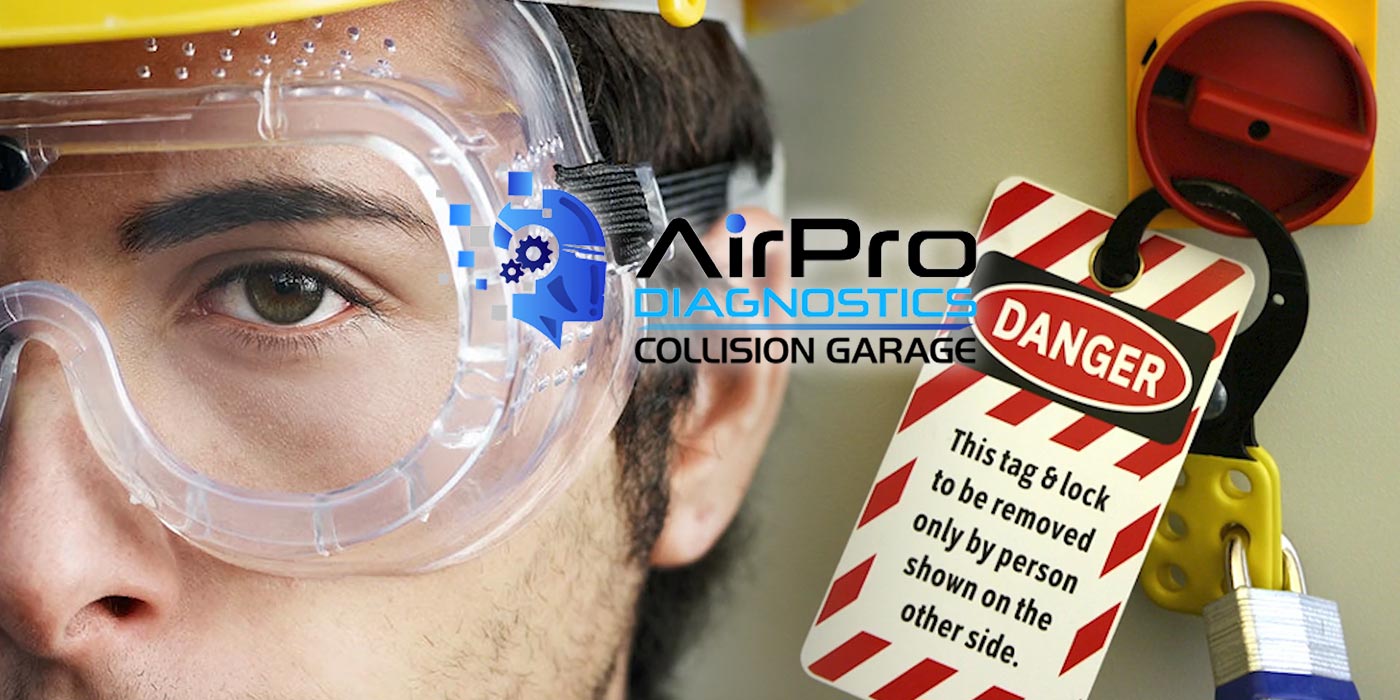
Editor’s note: The information in this article is general and should not be treated as legal guidance. Shop owners should consult an attorney for a specific plan for their business.
“Very careful” is how Robert Molina describes his approach to dealing with on-the-job drug and alcohol use at his shop.
Molina, who is the co-owner of Collision Care Xpress in Pompano Beach, Fla., has learned from experience, and he’s determined not to get burned again.
“My model used to be ‘quick to hire, slow to fire,’” Molina says. “And I’ve turned it around and made it ‘slow to hire, quick to fire.’”
Molina points to one employee who turned out to be a cocaine user. One of the first signs was that the man would be “low on cash right after payday.” Molina, who favors rehabilitation over incarceration, tried to help him. He even asked a few counselors from the Drug Enforcement Administration – the agency is a regular customer of the shop – to talk some sense into him. But it didn’t work.
“This guy just cleaned us out,” Molina says. “He stole some tools. He didn’t care. It was bad.”
Theft is just one of the many potential problems that on-the-job substance use can bring to a shop.
“There are so many that it’s hard to even list all of the possibilities,” says Kyle Holt, president of S/P2, an Overland Park, Kan.-based company that provides online training on workplace safety and pollution prevention. “Beyond the health effects of using drugs or alcohol in excess, you’re going to face an increased risk of missed workdays. You’re going to have days when the employees show up late to work. You’re going to have higher turnover, higher health care costs and legal issues.”
Because drug and alcohol use compromises an employee’s decision-making capacity, the safety risks go “through the roof,” Holt adds. In a typical body shop – where vehicles, workers, power tools, heavy equipment and flammable materials are co-mingled in a production environment – those risks are magnified.
“The opportunities to injure oneself or a co-worker are astronomically increased when you’re under the influence of drugs or alcohol,” Holt says. “There are so many ways that somebody can hurt themselves or hurt somebody else.”
Ultimately, the potential safety and health risks can translate into higher costs. The National Council on Alcoholism and Drug Dependence has estimated that drug abuse costs employers $81 billion annually. In 2002, the Office of National Drug Control Policy put a $129 billion price tag on illicit-drug use alone, factoring in lost worker productivity, absenteeism and poor job performance.
For a body shop, there are a number of ways that drug and alcohol use can torpedo the bottom line, from the cost of reworking a shoddy repair job to the spike in workers’ compensation premiums after an on-the-job accident.
For shops that rely heavily on insurance work, the price tag could be even steeper.
“If it ever got back to an insurance carrier that either somebody was drunk or high on the job when an adjustor was in the shop, or damage was done to a customer’s vehicle because of somebody being under the influence – or just finding out that shoddy work was done because somebody was under the influence – a shop can lose a direct repair program in no time flat,” Holt says. “And that can cost thousands and thousands above the cost of rework or anything alone those lines.”
Given the outcome of the John Eagle Collision Center lawsuit, it’s safe to say that the stakes could be exponentially higher if an employee who was using drugs or alcohol on the job did something that caused a serious injury – for example, botching a repair or hitting a pedestrian during a test drive.
Shops might look at it this way: There are 42 million reasons to maintain a safe, drug-free workplace.
Dazed and Confused
The opioid epidemic has garnered national attention, and rightfully so. According to the Centers for Disease Control and Prevention, the number of drug-overdose deaths is at an all-time high, and in 2016, the majority of those deaths (66 percent) involved opioids – a class of pain-reducing drugs that includes OxyContin, Vicodin, fentanyl and heroin. According to the American Society of Addiction Medicine, opioid abuse costs employers approximately $10 billion from absenteeism and presenteeism alone.
While few would argue that the surge in opioid use and abuse is a public health crisis, the state-level movement toward legalizing marijuana for medical and recreational use points to the nation’s mixed attitudes toward pot. As of February 2018, recreational marijuana was legal in nine states, and medical marijuana was legal in 29 states.
While pro-legalization advocates contend that the health effects of marijuana are no worse than alcohol, there’s evidence that pot use can be toxic to a business: According to a study cited in a whitepaper by National Families in Action, workers who test positive for marijuana have 55 percent more industrial accidents, 85 percent more injuries and 75 percent higher absenteeism rates than those who test negative on a pre-employment exam.
Nevertheless, public sentiment has shifted toward support of legalization. Six in 10 Americans say marijuana should be legalized, according to an October 2017 Pew Research Center survey, “reflecting a steady increase over the past decade,” the center notes.
There’s growing acceptance of marijuana as medicine too: Sanjay Gupta, CNN’s chief medical correspondent, has stated that he believes marijuana has legitimate medical applications. Nora Volkow, director of the National Institute on Drug Abuse, asserts that “there is mounting anecdotal evidence for the efficacy of marijuana-derived compounds,” although she adds that “science has not resolved” the question of whether or not marijuana’s therapeutic benefits outweigh its health risks.
In its whitepaper – titled “What Will Legal Marijuana Cost Employers?” – National Families in Action contends that “employers face a multitude of complications in states that partially or fully legalize marijuana.”
“Despite the lack of FDA approval of marijuana medicines being sold in these states, challenges to drug-free workplace policies are underway, as medical marijuana users try to assert a right to use marijuana on the job or just before and recreational users try to establish that daily use off the clock does not impair them during work hours,” the nonprofit group says. “Some states prohibit termination based on a failed drug test alone, instead requiring proof of impairment, when, unlike alcohol, no scientific measure of impairment has been established.”

If all of that has you dazed and confused about maintaining a drug-free shop in a pot-friendly state, keep in mind that marijuana remains illegal under federal law. In a January memo, U.S. Attorney General Jeff Sessions indicated that the Justice Department might step up enforcement in jurisdictions that have legalized marijuana, reiterating that Congress prohibits the cultivation, distribution and possession of pot under the Controlled Substances Act.
It’s unclear whether the attorney general’s directive will result in increased criminal prosecution of businesses operating under their states’ respective pot laws. But even in Illinois – which prohibits an employer from discriminating against a worker solely based on his or her status as a “registered qualifying” medical marijuana patient – a business still can terminate an employee if the employee’s use or possession of pot violates its workplace substance policy.
The Compassionate Use of Medical Cannabis Pilot Program Act, which took effect in 2014, outlines the rights of employees and employers in Illinois. Section 50 of the act “states that nothing in the act shall prohibit an employer from enforcing policies concerning drug testing, zero tolerance or a drug-free workplace as long as such policies are applied in a nondiscriminatory manner,” explains Deanna Litzenburg, an attorney and shareholder with the Illinois law firm Mathis, Marifian and Richter, in a blog post.
“In states such as California, Colorado, Oregon and New Mexico, whose compassionate-use laws are silent on this issue, the courts have been answering the question in favor of employers,” Litzenburg adds. “In essence, courts are ruling that employers may still enforce their drug-testing and drug-use policies and are not affirmatively required to provide reasonable accommodations for the use of medical marijuana by their employees. This is because marijuana is still a federally banned substance under the Controlled Substances Act and requiring employers to accommodate an employee’s use of medical marijuana would be requiring employers to permit conduct that is expressly prohibited under federal law.”
Most states, including Colorado, allow employers to require a drug test if there’s “reasonable suspicion” of on-the-job substance use, and most states allow drug testing as a condition of pre-employment. There’s more state-by-state variation for the laws on random and periodic testing. (As with any aspect of your shop’s policy, it’s critical to seek the guidance of an attorney to ensure that the guidelines in your policy comply with your state’s employment laws.)
In pot-friendly Colorado, Robert Grieve, owner of Nylund’s Collision Center in the Denver area, has implemented a drug-free workplace policy, and he points out that “doing drugs on the premises can absolutely get you fired.”
Grieve notes that his workplace drug policy includes the reasonable suspicion clause, although he hasn’t had to invoke it. When it comes to reasonable suspicion, he says it would be difficult for any of his employees to fly under the radar if they were using drugs or alcohol on the job.
“I’m on the floor most of the day, and I spend a lot of time with my techs,” Grieve says. “I don’t have any commissioned or flat-rate people – everybody is hourly or salary – so everybody is constantly helping the next person do whatever their job is. No matter what the job task is, there are usually a couple people involved. If somebody isn’t right, I get alerted pretty quickly – if I haven’t already figured it out myself – and we don’t allow that to continue.”
One final thought on the issue of state-level legalization vs. federal law: Section 5 of the Occupational Safety and Health Act of 1970 – commonly known as OSHA’s General Duty Clause – requires employers to provide a workplace that is “free from recognized hazards that are causing or are likely to cause death or serious physical harm to his employees.” In an article for Tire Review (a sister publication of BodyShop Business), Tommy Eden III, a partner at the nationwide management labor law firm Constangy, Brooks, Smith & Prophete, asserts that the OSHA General Duty Clause “can be a defensive legal shield if used correctly.”
Be Consistent
Protecting your shop begins with a drug-free workplace policy – which always should be developed with the help of an attorney.
Industry trade associations, consultants, insurance carriers and state workers’ compensation bureaus are other potential resources when developing a policy, says Barbara Kimbrew, manager of human resources for Babcox Media, which publishes BodyShop Business.
Ultimately, though, Kimbrew and other experts emphasize that you’ll need to run your policy by an attorney to ensure that it complies with state-specific employment regulations.
The Substance Abuse and Mental Health Services Administration (SAMHSA) points to the importance of having the policy in writing. Among the reasons, the agency notes that a written policy is easier to explain to employees, “provides a record of the organization’s efforts and a reference if the policy is challenged” and “might protect the employer from certain kinds of claims by employees.”
Developing a policy – and asking employees to acknowledge that they’ve read and understand it – is just one element of maintaining a drug-free workplace.
Holt believes it’s important to train your entire staff “on what to look for in a substance-abuse situation.” S/P2 offers a training module that teaches owners, managers and employees how to recognize the signs of potential substance use in the workplace.
Sometimes the signs are obvious: An employee smells like alcohol or marijuana, or admits to being drunk, high or hungover on the job (which happens more often than you might think, Holt says). Other times, the signs are subtler.
“You might have situations where somebody starts showing up with a sloppy appearance on a regular basis, they have slurred speech, they’re clumsy, they’re doing shoddy work –where maybe they didn’t used to – they have shaky hands, they’re looking tired, they’re missing days, they have mood swings – all those things that at first we have a tendency to blow off and say, ‘Well maybe he’s just under the weather or something,’” Holt explains. “But when we see these things trending, you may not know for sure, but if you suspect [that there’s a problem], something needs to be said to management or ownership.”
When enforcing a workplace substance-use policy, Kimbrew adds that it’s important to be consistent.
“Consistency is key,” Kimbrew says. “When you have this type of policy or any type of policy, you have to make sure that it’s communicated and you have to make sure that you follow the policy consistently with everyone on the team.”
Sidebar: Does the Auto Body Industry Have a Drug Problem?
Matthew Goetz, owner of Goetz Auto Service – a one-man body shop in Alexandria, Ky. – can’t remember the last time he drank more than two beers.
“I’m just too busy,” Goetz says. “I don’t have time for it.”
While he wouldn’t dream of using drugs or alcohol on the job, Goetz says he’s seen his fair share of it at shops where he worked in the past. “I believe it’s a lot more common than most people think,” Goetz says.
A lot of techs are heavy drinkers or pot smokers, he says. But he believes the bigger problem is pills. He recalls working with one longtime tech who complained of a litany of chronic injuries and clearly “was all hopped up on pain pills just to get through the day.”
“The industry is hard on techs,” Goetz says. “ … To be a good tech, you really have to hustle and multitask. You’re always up and down, working on concrete all day, crawling around on your knees.”
Kyle Holt, president of the online training provider S/P2, offers a different take on the question. If there’s a substance problem in the collision repair industry, Holt asserts, it’s alcohol.
“I can say with near 100-percent certainty that alcohol is the No. 1 issue that affects collision repair, because it’s the No. 1 issue that affects every industry,” Holt says. “ … Alcohol is far and away the most prevalent drug that’s used in the workplace.”
To Holt’s point, the 2013 National Survey on Drug Use and Health found that 79 percent of adult binge drinkers and 76 percent of adult heavy drinkers are employed either full- or part-time. The same survey found that 69 percent of the estimated 22.4 million illicit-drug users in the nation are employed.

Frank Rinaudo, owner of Frank’s Accurate Body Shop in Slidell, La., believes that substance use is common in the auto body industry. He attributes it to the physicality of the job as well as the personality type that the industry attracts.
That doesn’t mean shops should tolerate it. Rinaudo has drug-free workplace policy. He also requires each employee to sign a form acknowledging that the shop has the right to perform random drug tests – although he hasn’t had to do that.
“Working on cars, we’re dealing with people’s lives,” Rinaudo says. “If we don’t pay attention to what we’re doing, and we don’t do things properly, we can put people’s lives at risk.”
Not all shops are so conscientious. With good techs hard to find in certain parts of the country, Goetz has observed that some shops don’t enforce or even mention their drug/alcohol policies, out of fear that their competent techs will jump ship.
“Every place I’ve worked at has had trouble finding somebody who not only can do what they say they can do but also show up on time and be somewhat professional,” Goetz says of the tech crunch in his region.
Still, shops that might be worried about losing their techs should consider the myriad legal and financial risks of ignoring on-the-job substance use. The National Council on Alcoholism and Drug Dependence offers a long list of issues that workplace alcohol and drug use can cause for employers, “ranging from lost productivity, absenteeism, injuries, fatalities, theft and low employee morale to an increase in health care, legal liabilities and workers’ compensation costs.”
While it’s clear that collision repair and on-the-job substance use don’t mix, there are shop owners who believe in giving people a second chance – such as Kye Yeung, who employs a reformed “gangbanger” at one of his Southern California shops, and Ron Reichen, who trains and hires ex-convicts at his Oregon shops. Yeung and his wife also are active volunteers in local recovery programs.
Robert Molina is another shop owner who believes in second chances. Molina, co-owner of Collision Care Xpress in Pompano Beach, Fla., has sent some of his employees with alcohol problems to a recovery program at a local church, and has had some success.
“It’s not a full-blown alcohol program, but we feel it’s the best program that actually works, because it’s a very loving, caring program,” Molina says.
However, he says he doesn’t waste his time trying to help a pill addict – South Florida has been ground zero for the nation’s pill-mill epidemic – “because we’ve never seen a resolution of that.”
“We consider that a total loss,” Molina adds. “There’s really not much you can do. We’ve been burned on that too many times.”
Giving people a second chance is a tricky subject “when we’re talking about something that puts a business, an individual, the staff in mortal danger,” Holt says. It might sound like a broken record, but Holt emphasizes that it’s best to consult an employment attorney to determine the right approach to a workplace substance-use policy.
Philosophically speaking, though, Holt believes that “most of life is second chances.”
“This industry has some really awesome, awesome leaders who have struggled with alcohol and drug addiction, overcame it and are just killing it now,” Holt says. “If nobody had given them a second chance, their life is ruined.”













